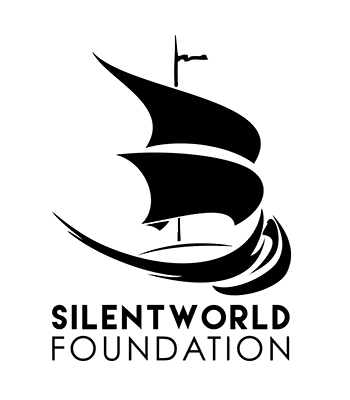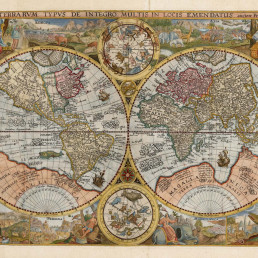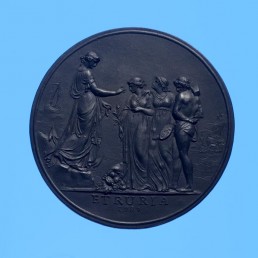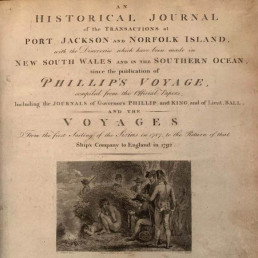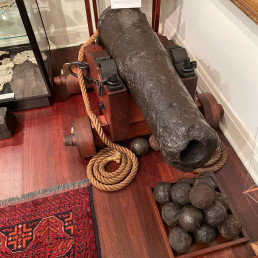
Name/TitleToggle Head Whaling Harpoon
About this objectThe toggle harpoon was used during the pursuit of the whale to deliver the first strike. Rather than a fixed head harpoon, the toggle harpoon featured a pivoting head that became embedded in the flesh of the whale. It was invented in 1848 by Lewis Temple who was born in Richmond, Virginia in 1784. In 1829 Temple married a free black woman and he was able to operate his own blacksmith shop until his death in 1854. This is an iron toggle harpoon head. It would have been attached to a long wooden pole. The design was based on a traditional Eskimo design.
Lewis Temple's invention of an improved harpoon for whaling revolutionized the whaling industry and brought profit to its inventor, even though he never took out a patent on his work.
Lewis Temple was born a slave on October 22, 1800, in Virginia. Little is known about him until he arrived in New Bedford, Massachusetts, sometime in the 1820s. By 1829, he was free and had married Mary Clark. The couple had three children, Lewis, Jr., Nancy, and Mary. New Bedford was a whaling town on the southern coast of Massachusetts, and Temple, who was a blacksmith and a metalsmith, was reasonably successful. Initially, he worked at a blacksmith shop owned by someone else, but by 1845, he had his own shop.
No one had made any real improvement to the harpoon in several centuries. Prior to Temple's invention, harpoons were like big spears with a line attached. A sharp triangular head pierced the skin of the whale. However, because the sharp edges could cut on their way out as well, a harpoon often slipped back out, especially if the whale gave a good tug. Barbs on the point were added to prevent the back cutting, but the whole head could still cut in the reverse direction. Many whales were lost in this way.
In 1848, Temple added a toggle to the harpoon head. Called "Temple's Toggle," the toggle worked something like a toggle bolt does in Sheetrock. The harpoon head slipped neatly through the whale's skin because the toggle was pulled back against the harpoon's shaft. Once the head had penetrated the whale's skin, the lines to the harpoon could be pulled, and the head would swivel inside the skin to form a secure T, with the wings of the T flat against the skin. The cutting edge was then turned away from the skin, and the harpoon was much less likely to cut its way back out, and far fewer whales were lost.
The new toggle head was enormously popular, and even though Temple never patented the invention, he still profited. However, he had to scramble to keep ahead of his competitors. By 1849, manufacturers were hawking his invention with great success. One of them manufactured and sold 13,000 of Temple's toggle-head design.
In 1853, Temple had the misfortune of falling into a hole on a New Bedford street. He sued the city and received a promise of recompense of $2,000. With such a promise in hand, he began building a new shop, but he died in May 1854 from complications stemming from his fall. The city did not come through with the promised recompense for his family either. However, a statue in honor of Temple now stands outside the New Bedford Public Library.
MakerLewis Temple - Inventor
Maker RoleInventor
Date Madec 1800
Period19th century
Medium and MaterialsIron
Object TypeGeneral Interest
Object numberSF001091
Copyright Licence![]() Attribution - Non-commercial - No Derivatives (cc)
Attribution - Non-commercial - No Derivatives (cc)
Explore by category
Maps and Charts
Date range: 1541-1836
Ship Models
Date range: 1629-1890
Maritime Paintings
Date range: 1793-1849
Manuscripts and Ephemera
Date range: 1768-c1850
Medallions & Convict Tokens
Date range: 1619-1880
Landscapes
Date range: 1768-c1850
Books
Date range: 1694-c1850
Currency and Shares
Date range: 1624-1823
Printed Material
Date range: 1541-1836
Maritime Archaeology
Date range: 1629-1854
Curator's corner
New acquisitions, staff favourites and curios
The mug is decorated with an underglaze and a blue transfer print. On the body, it is titled ‘Emigrants to Australia’. This type of body and glaze was discontinued by 1840. Comparison of the handle shape and the profile of the foot, point to the attribution of manufacture by the Davenport Factory.
Delta was a ship-rigged vessel with two decks and three masts. It was built in Dordrecht, Netherlands in 1839 at the shipyard of Jan Schouten and registered in the same port. Its hull was constructed of oak and sheathed in ‘yellow metal’. Delta was owned by H. van der Sande at the time of its loss and was engaged as a cargo trader.
The Delta carried 29 crew and passengers, while sailing from Melbourne to Batavia in ballast when wrecked at Kenn Reefs on 30 May 1854 whilst under the command of Captain J.G. Kunst. This vessel loss supports the pattern of shipwrecks located on a well-travelled shipping route that was poorly charted until the mid-nineteenth century. The crew of the Delta could see four other shipwrecks at Kenn Reefs at the time of their vessel’s loss.
Important image of a ship associated with Matthew Flinders, that would shortly become one of the most famous early shipwrecks in eastern Australian waters. This is a fine ship’s portrait, by one of the great exponents of the art
